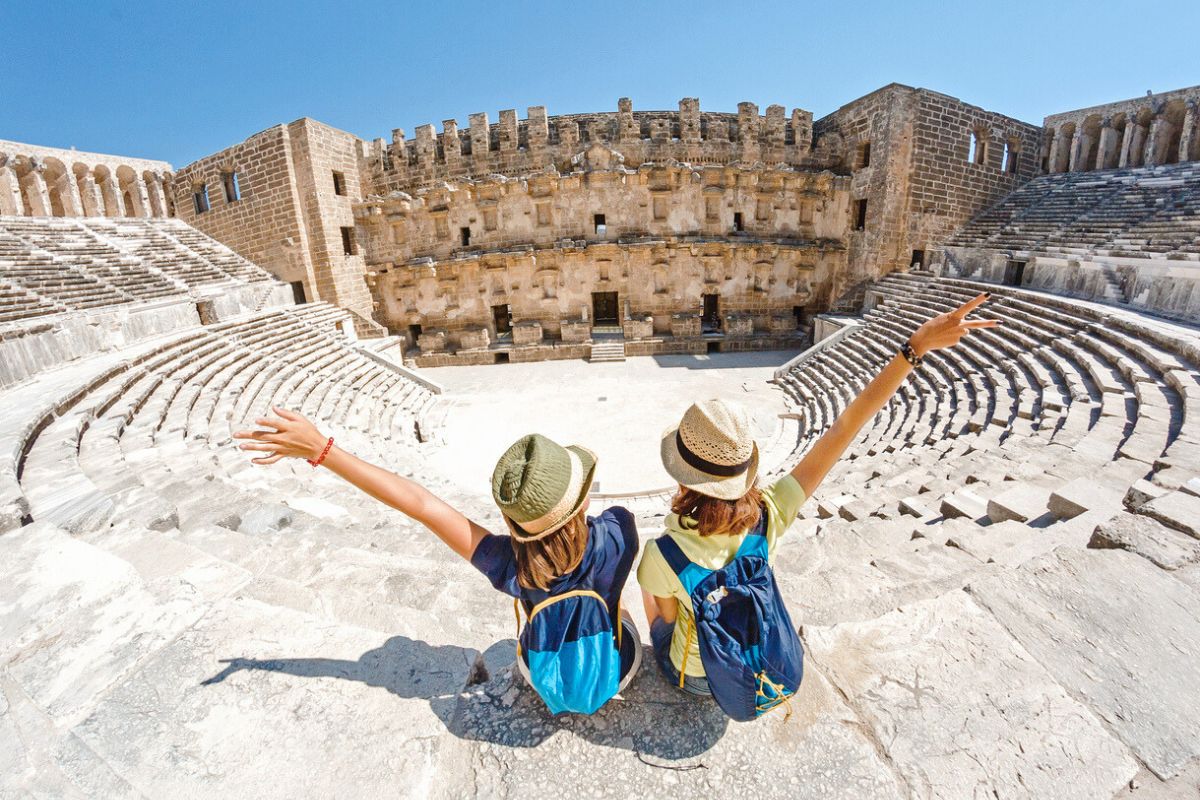Named after the Goddess of Wisdom, Athens is a city where the past breathes life into the present at every turn. Here, the ancient ruins are more than just relics, they are the pulsating heart of a civilization that once reigned supreme over the Western world.
The Acropolis and the Parthenon dominate the city skyline, while the Temple of Zeus, built to celebrate the King of the Olympian Gods, hints at the ancient city’s glorious past. Meanwhile, the Kallimarmaro Stadium, Ancient Agora and Kerameikos reveal the everyday life experiences in the ancient capital.
So, pack your curiosity and prepare yourself for an unforgettable exploration of the best ancient ruins in Athens, where every stone has its own story to tell!
Want to dive straight in? Browse our catalog now!
1 – The Parthenon (Acropolis)
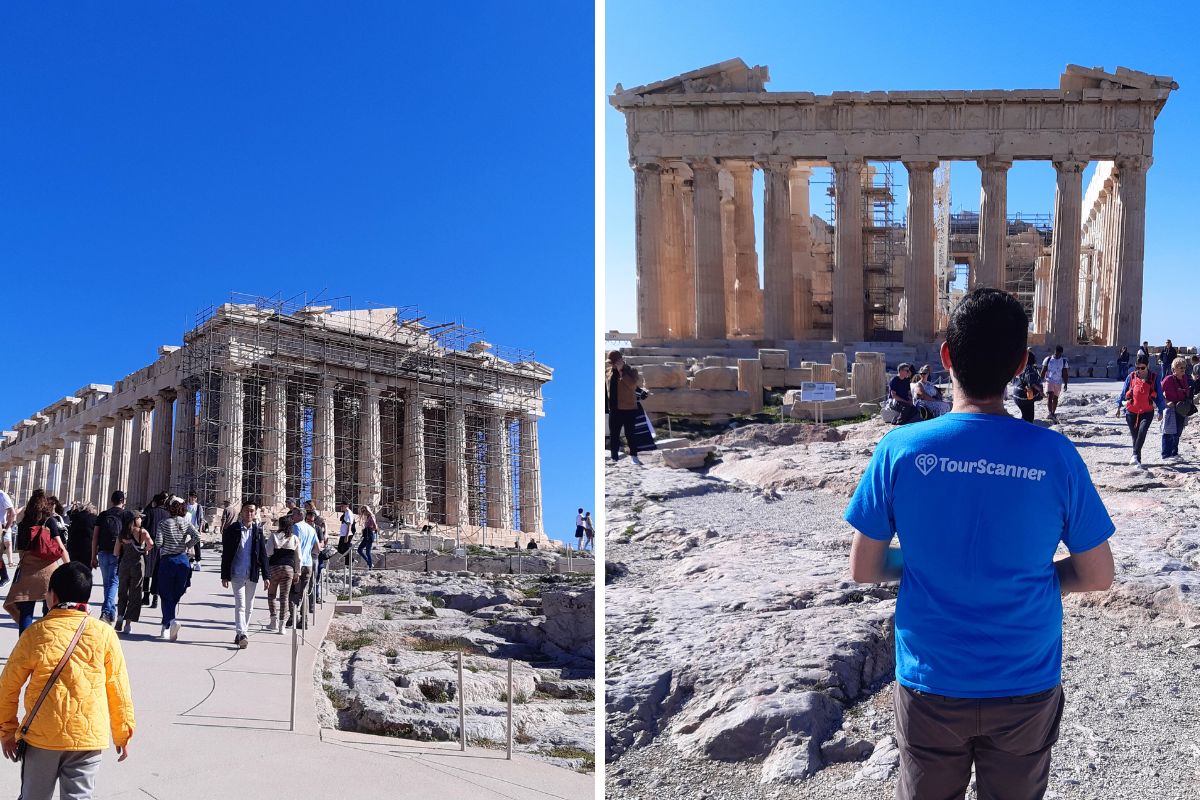
The Parthenon, the crowning jewel of the Acropolis, is a symbol of the glory of Ancient Greece and a UNESCO World Heritage Site. This architectural masterpiece was dedicated to Athena, the city’s patron goddess, embodying the zenith of Athenian power in the 5th century BC. Its Doric columns and exquisite sculptures encapsulate the ideals of harmony and proportion.
Despite suffering from time, wars, and looting, the Parthenon remains an enduring legacy of classical antiquity. Its significance transcends the aesthetic, serving as a beacon of democracy and Western civilization.
Today, visitors from around the world are captivated by its imposing beauty and the historical narratives it preserves, making it an essential pilgrimage site for lovers of history and architecture.
Bonus tip: After visiting the Acropolis, you can learn more about its ancient artifacts and history at the Acropolis Museum, one of the best museums in Athens.
2 – Temple of Hephaestus (Ancient Agora)
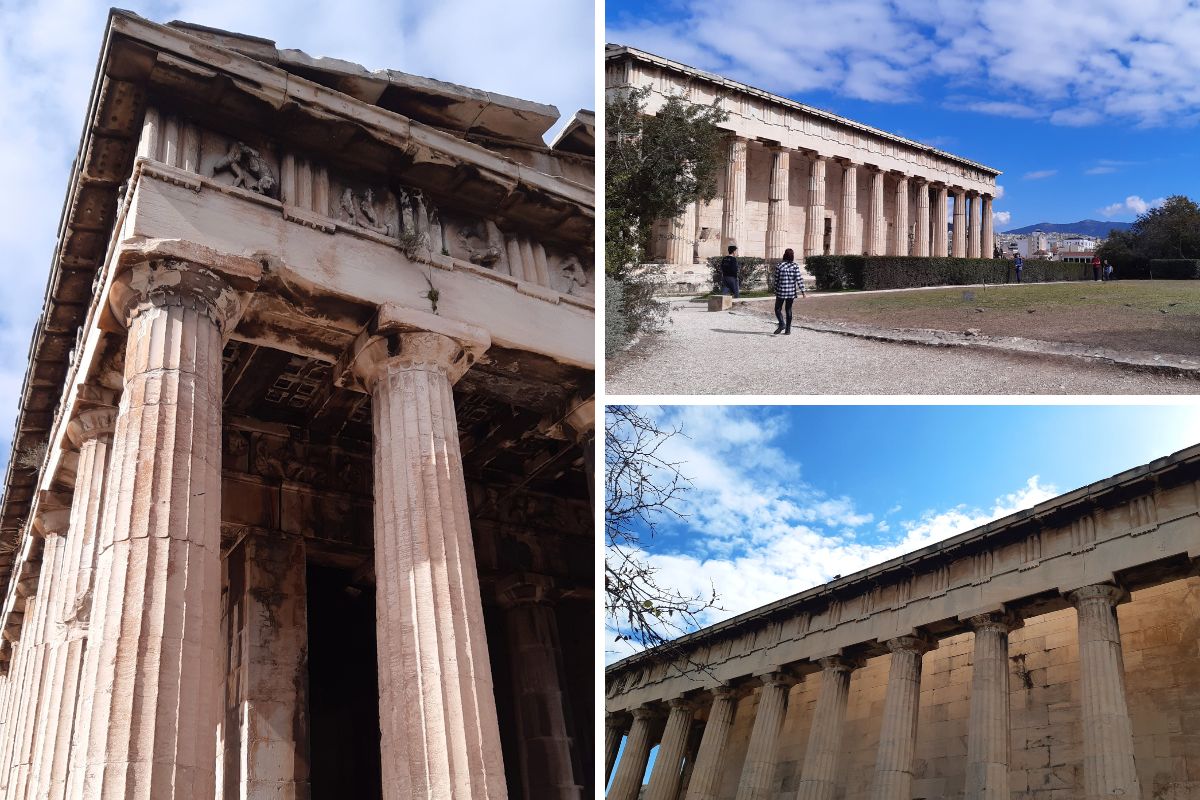
Standing proudly within the Ancient Agora of Athens, the Temple of Hephaestus is one of the best-preserved Greek temples since its completion in 415 BCE. Dedicated to Hephaestus, the god of fire, craftsmanship and metallurgy, this temple showcases the quintessential elements of Doric architecture.
The Hephaestion, as it is also known, overlooks the Ancient Agora indicating that it played an integral role in the daily lives of the city’s inhabitants, serving as both a center for worship and civic gatherings. Today, it provides a serene backdrop for understanding ancient Greek culture.
As one of the best preserved temples in Greece, the Temple of Hephaestus invites you to step back in time and explore the rich history of Athens and its people.
3 – Temple of Olympian Zeus
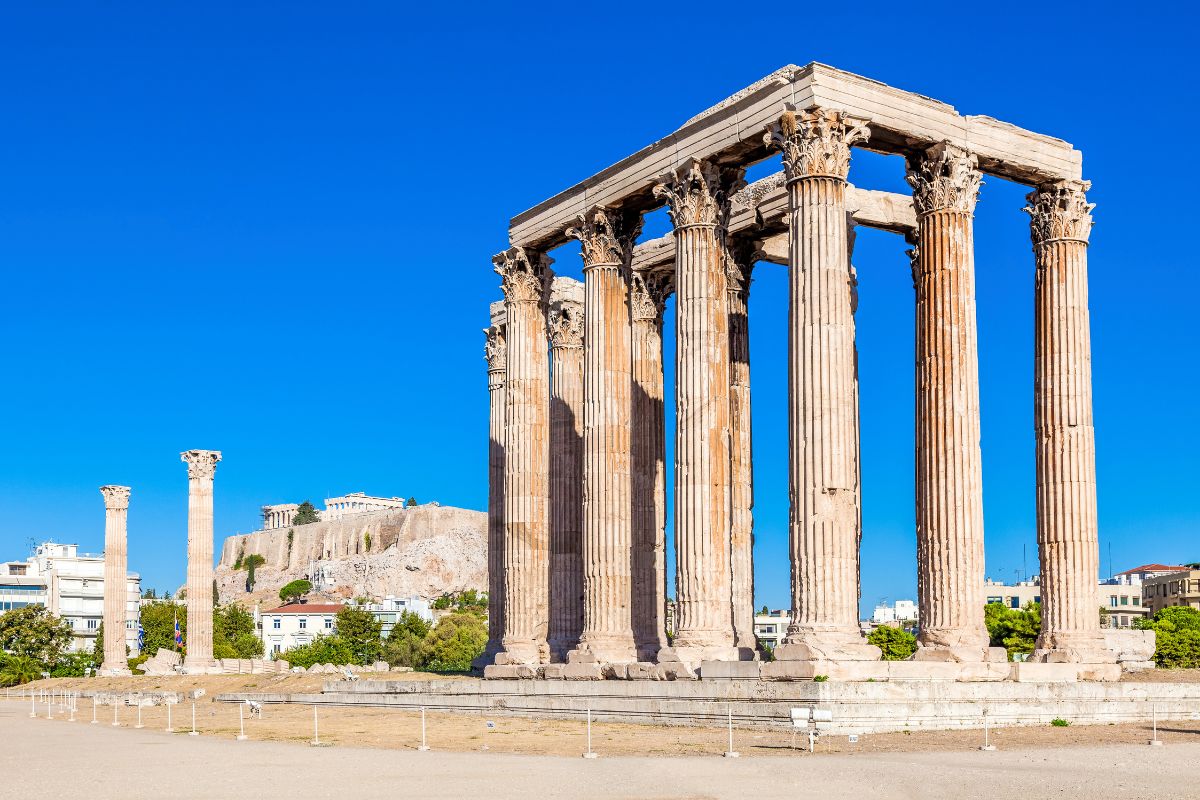
Discover the Temple of Olympian Zeus, also known as the Olympieion, a cornerstone among the best ancient ruins in Athens. This majestic site, once the largest temple in Greece, showcases the grand ambitions of ancient Athenian architecture. Initiated in the 6th century BCE and brought to completion nearly 700 years later by the Roman Emperor Hadrian, the temple is dedicated to Zeus, the supreme deity of the Olympian gods.
While today, only a handful of the original 104 Corinthian columns stand, their imposing presence offers a glimpse into the temple’s former glory. More than just one of the city’s most famous ruins, the temple is a symbol of the architectural and spiritual aspirations of ancient civilizations.
4 – Roman Agora of Athens
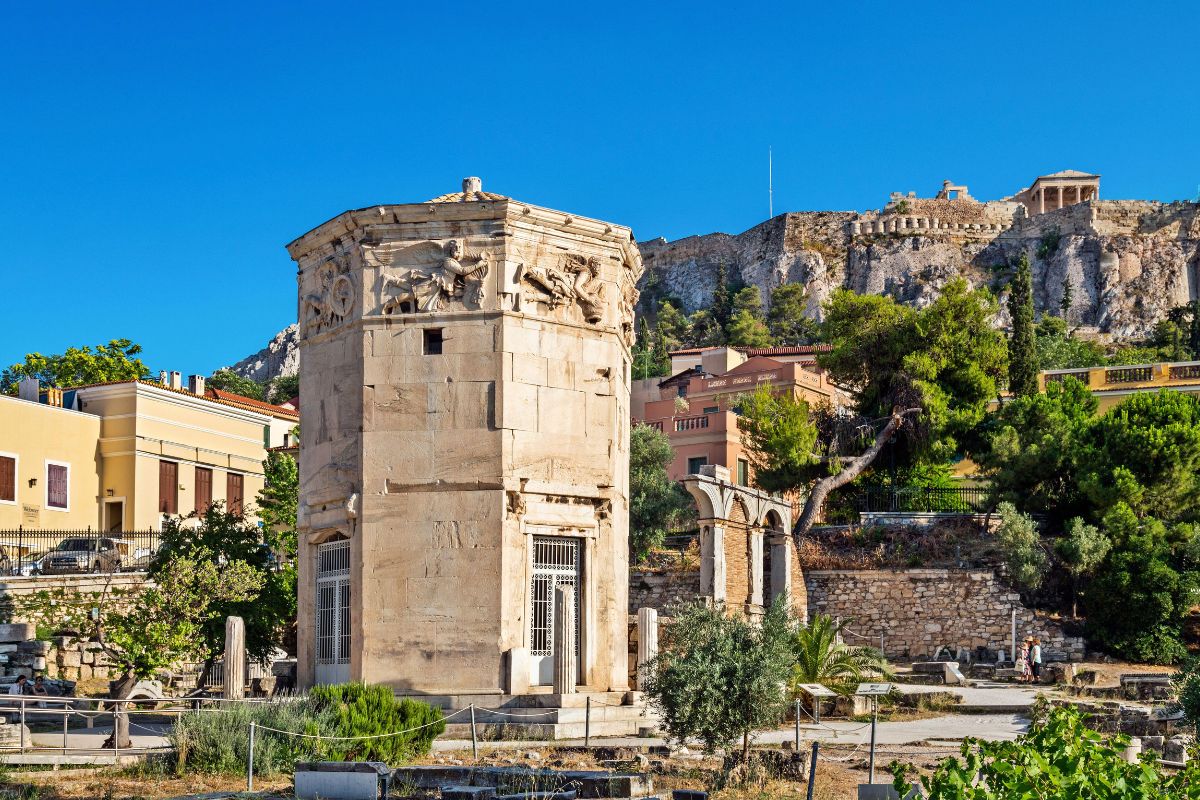
Venture to the Roman Agora of Athens, a pivotal hub of ancient commerce that stood as the very pulse of the city. Located in the center of Athens and financed by Julius Caesar and Augustus, this archaeological treasure invites you to traverse the grounds where the ancients conducted their daily trades and social exchanges.
Witness the majestic Gate of Athena Archegetis, a testament to the grandeur of the past, and let your imagination reconstruct the bustling scenes of merchants and citizens bartering. This ancient marketplace illustrates how the Roman Agora was the center of both commerce and community life.
The Roman Agora is a crucial piece in understanding the layered history of Athens, showcasing the blend of Roman and Greek influences.
5 – Hadrian’s Library
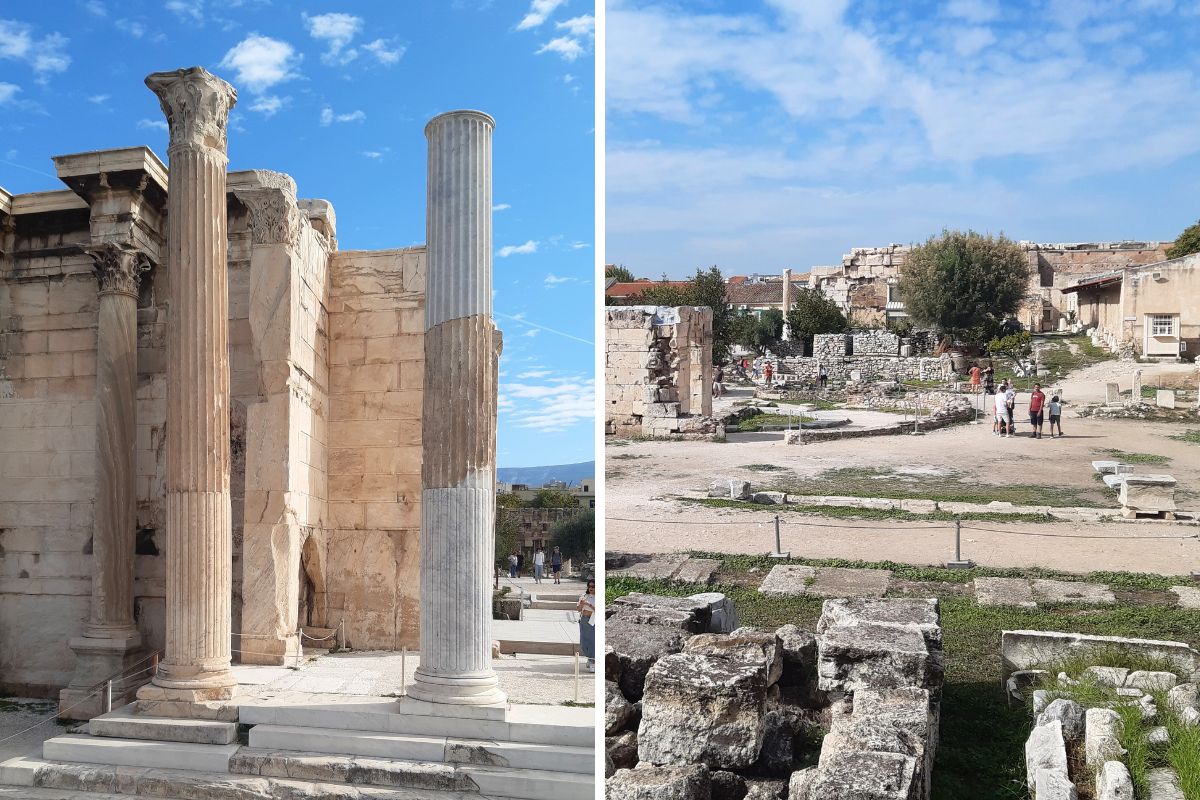
Just a stone’s throw from Plaka, right at the center of Athens, and explore Hadrian’s Library, a jewel among the best Athens ruins. Established by Emperor Hadrian in 132 AD, this remarkable library was a vibrant cultural epicenter where reading rooms, lecture halls, and lush gardens flourished.
As you navigate through the remnants, imagine the scholars who once roamed these grounds, engrossed in the pursuit of knowledge that has come to epitomize ancient Greek heritage.
Situated in the bustling Monastiraki area, this monument stands as a testament to the ancient Athenians’ profound respect for education and literary excellence, inviting today’s visitors to connect with the intellectual spirit that once pervaded this incredible city.
6 – Aristotle’s Lyceum
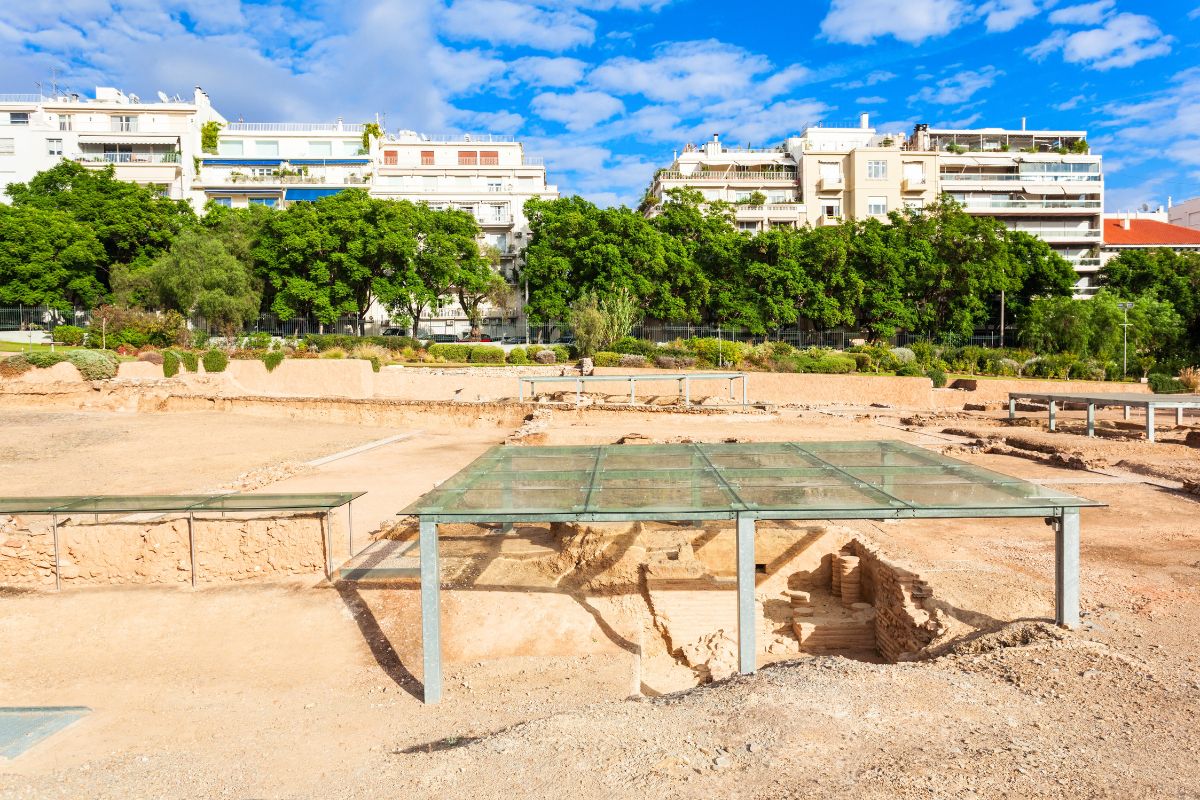
Walk in the footsteps of philosophers at Aristotle’s School, one of the best places to connect with the ancient sites in Athens. This historic institution, also known as the Lyceun, was established in 335 BC by the legendary philosopher Aristotle and served as a nurturing ground for intellectual debate and scientific exploration.
Today, as you navigate through the remnants of this iconic site, you’re retracing the steps of some of the most profound thinkers in history. The Lyceum transcends its physical boundaries, representing a monumental era of knowledge and dialogue that significantly shaped Western philosophy.
For those planning a trip with a keen interest in ancient history, a visit to the Lyceum offers an unparalleled opportunity to engage with the past, in a place where philosophy once lived and breathed.
7 – Temple of Athena Nike (Acropolis)
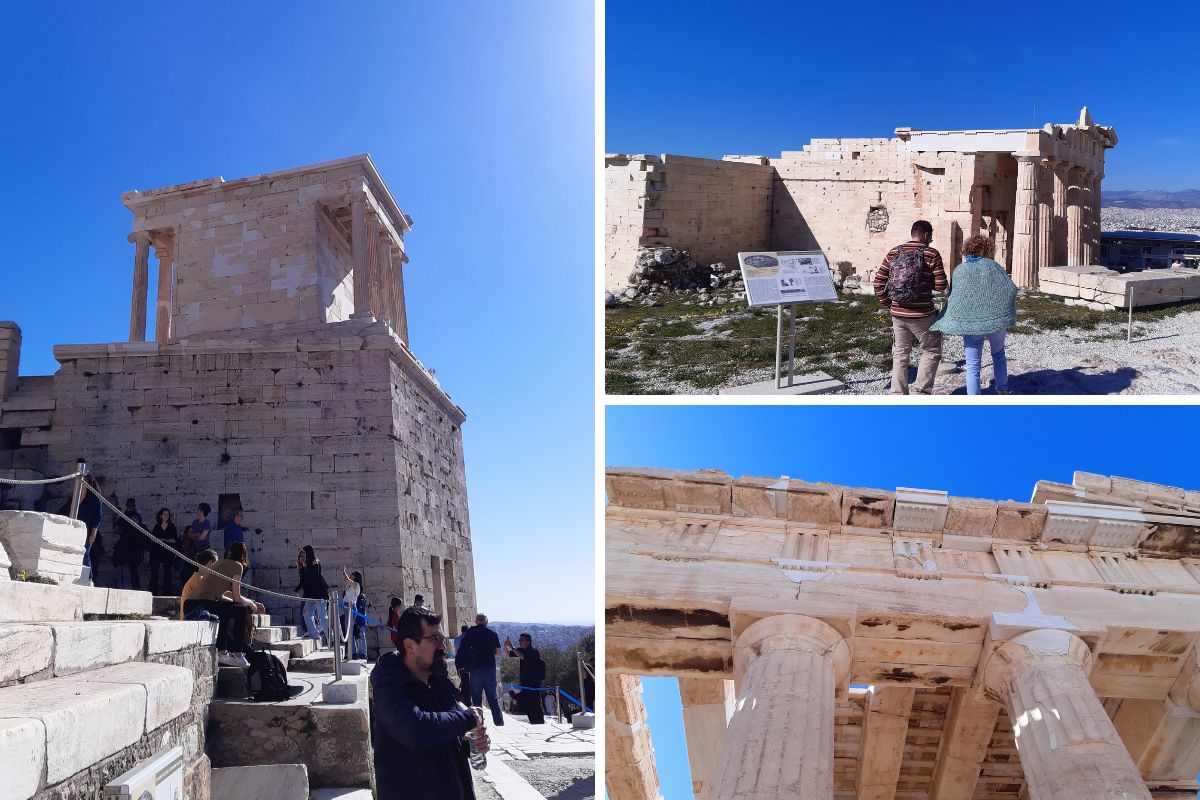
Standing proudly at the Propylaea in the Acropolis, the Temple of Athena Nike is a jewel among the best ancient ruins in Athens. This temple, dedicated to the goddess of victory, symbolizes more than just architectural splendor; it embodies the ancient Greeks’ desire for peace and success in their endeavors.
This site holds a deeper narrative with the legendary contest between Athena and Poseidon, where the olive tree, a gift from Athena, marked her victory. Today, visitors are invited to not just view but connect with a pivotal piece of history at this strategic vantage point.
The Temple of Athena Nike, with its detailed friezes and commanding presence, continues to inspire those who walk through the entrance to the Acropolis, serving as a powerful reminder of the blend of spirituality, culture, and military precision that defined ancient Athens.
8 – Kerameikos
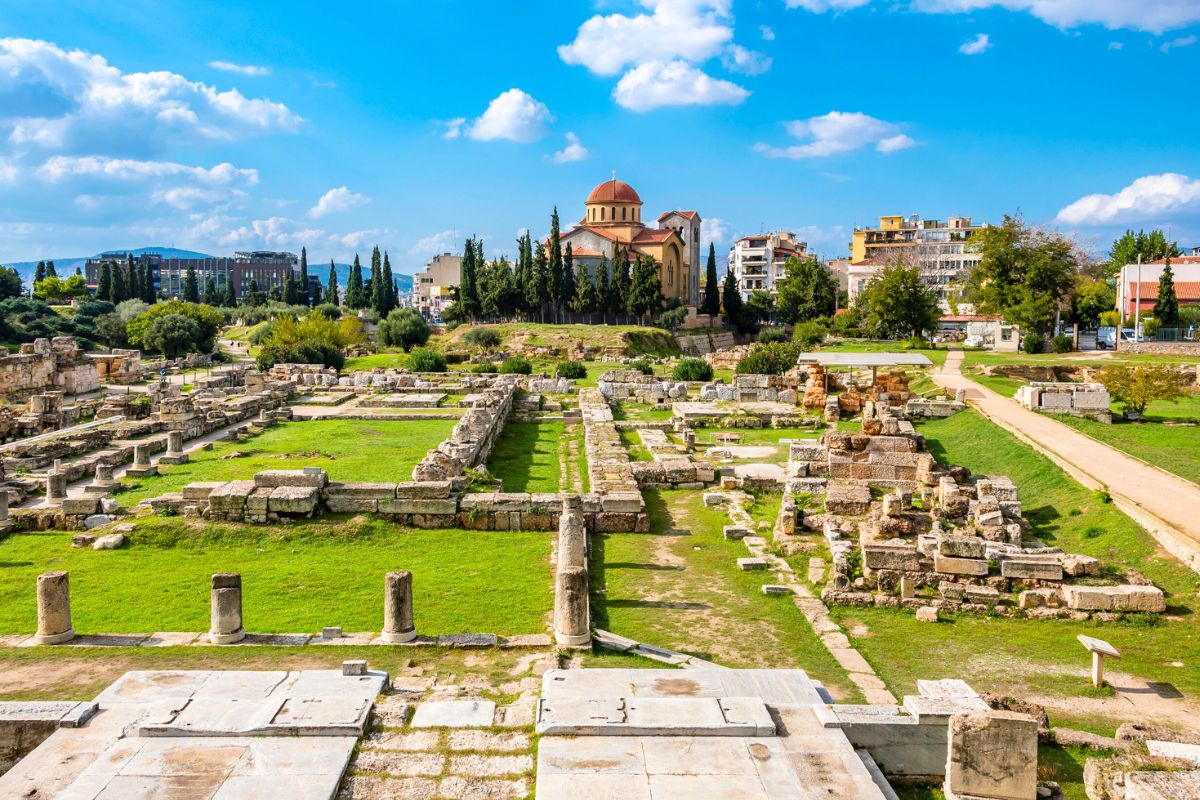
Kerameikos, one of the best ancient ruins in Athens, invites you into a world where reverence for the afterlife and artistic expression intertwine. Situated just beyond the northwest city walls of ancient Athens, this archaeological site and museum showcases the intricate funerary sculptures that highlight the ancient Greeks’ profound respect for those who have passed.
Each gravestone tells a story, offering a glimpse into the personal and collective history of those who walked the streets of Athens millennia ago. Beyond its tombs and sacred gates, though, Kerameikos was once a bustling district, alive with the creativity of potters and artisans.
This blend of solemnity and vibrancy offers visitors on a trip to Athens a unique insight into the spiritual and everyday life of its ancient inhabitants.
9 – Panathenaic Stadium (Kallimarmaro)
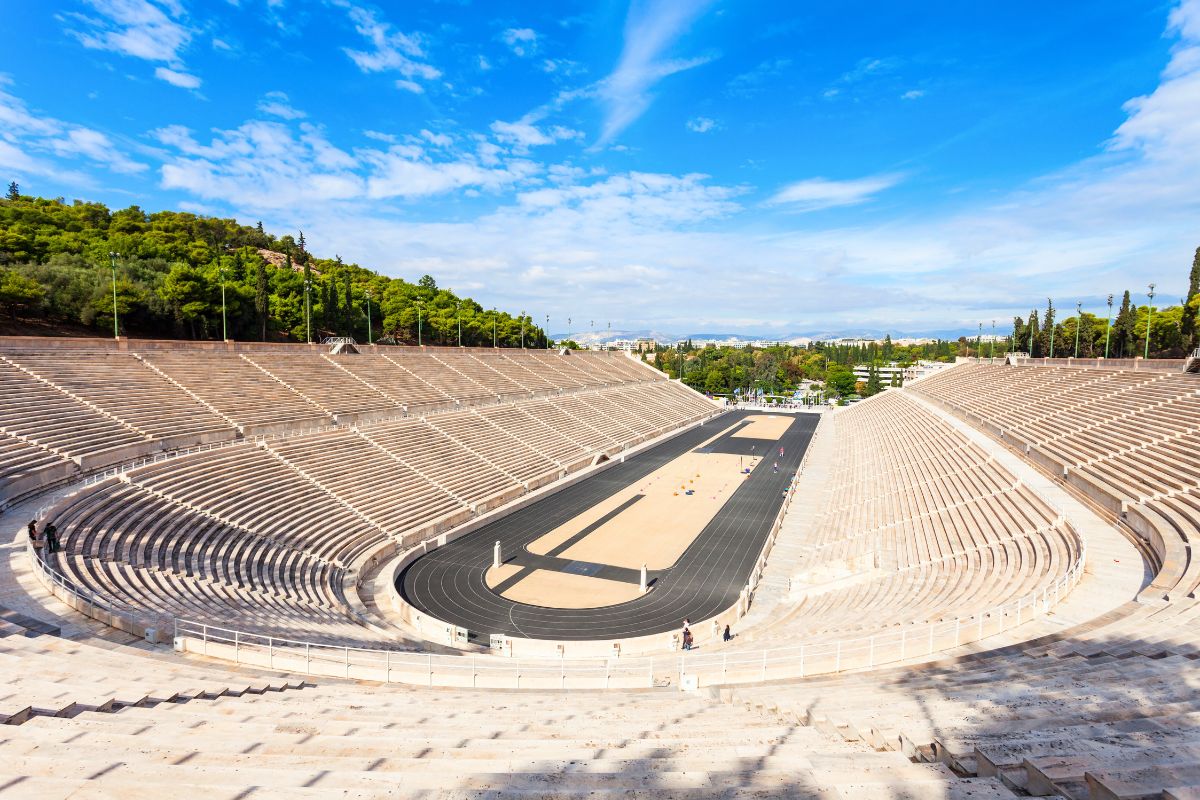
On your marks, get set, go! The Panathenaic Stadium, an architectural wonder located in the lively Pagrati area, is one of the best places for history enthusiasts and sports fans alike when planning a trip to Athens. Built to celebrate the athletic prowess and competitive spirit of the ancient Athenians, the all-marble Kallimarmaro, as it is also known, hosted the first modern Olympics in 1896, yet its history stretches back to the 4th century BC.
Imagine yourself amidst the energy of the crowd, the stands echoing with the cheers for the competitors, a practice that has been rekindled over the ages. The Panathenaic Stadium invites you to connect with the timeless tradition of sportsmanship that continues to captivate and inspire visitors from around the globe.
10 – Stoa of Attalos (Ancient Agora)
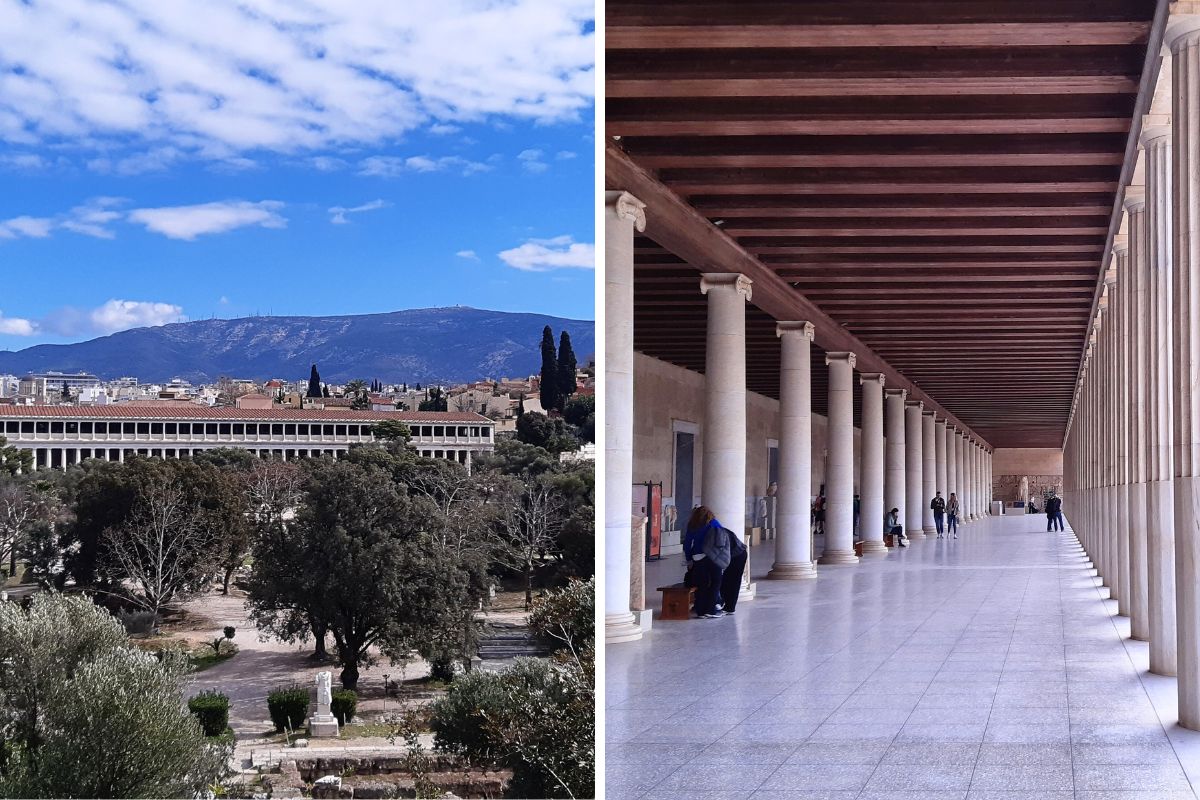
The Stoa of Attalos, magnificently restored, shines as a key highlight among the best ancient ruins in Athens. Positioned in the heart of the Ancient Agora, it is home to the Museum of the Ancient Agora, offering a captivating gateway into the world of the ancient Athenians. Here, an extensive array of ancient artifacts awaits, each telling a story of the everyday life, culture, and aspirations of those who once thrived in this historic metropolis.
Originally erected by King Attalos II, this architectural masterpiece, with its two-story colonnade, invites you today to set off on an exciting journey back in time. Wander through the stoa, once buzzed with social gatherings and intellectual discourse, and discover the ingenuity of ancient Greek architecture.
11 – Odeon of Herodes Atticus
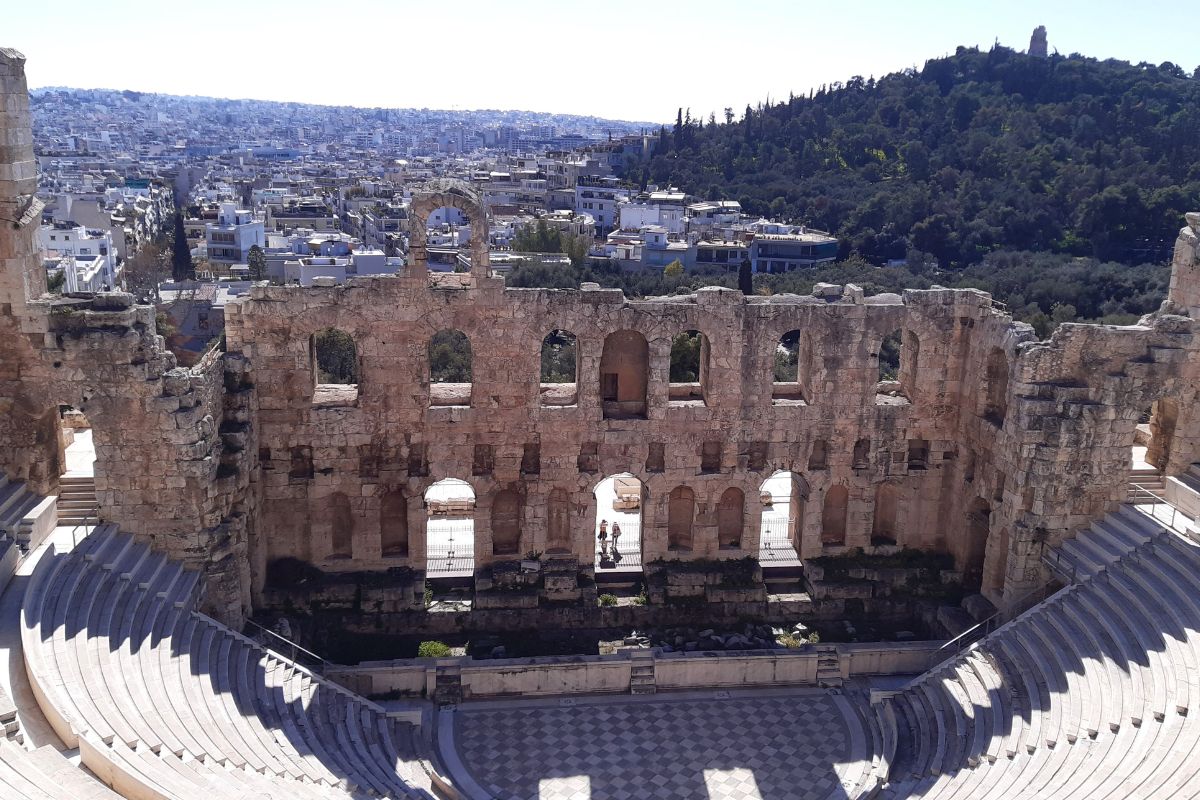
The Odeon of Herodes Atticus, the iconic open-air theater beneath the Acropolis, was crafted by Herodes Atticus to honor his late wife and has been at the heart of Athens’ cultural scene since 161 AD. Here, the ancient and modern worlds collide, offering a stage that has seen the gamut from classical tragedies to headline acts, from the Foo Fighters and Sting, to Luciano Pavarotti and Frank Sinatra.
As you sit on the ancient stones, let the ambiance transport you to a time when this theater was alive with the sounds of music and oratory, making it a must-visit for lovers of history and the performing arts. For an unforgettable evening, consider experiencing a performance under the Athenian stars.
12 – Philopappos Monument
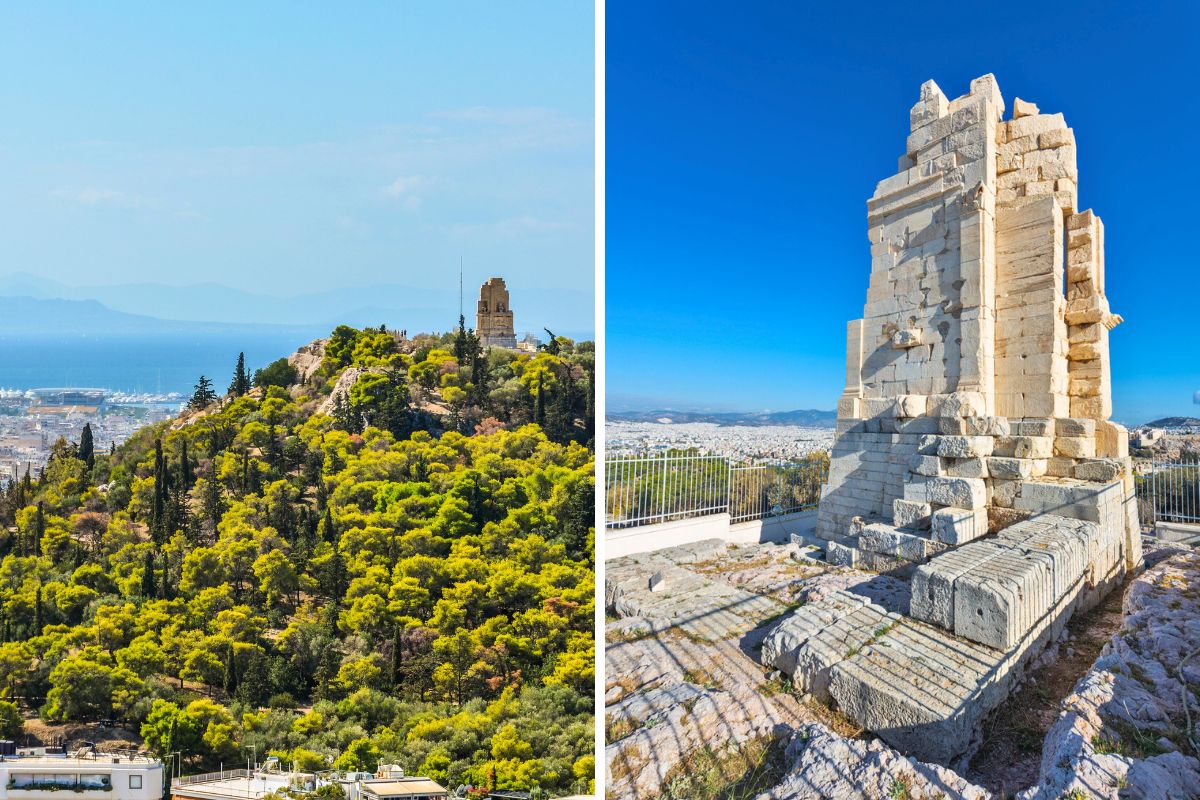
For a blend of history and panoramic views, exploring the Philopappos Monument easily ranks as one of the most fun things to do in Athens. Perched atop Philopappos Hill, this monument pays homage to Prince Philopappos from the 2nd century AD, providing a direct link to the city’s storied past.
Hiking up the hill in the center of Athens is an opportunity to experience unparalleled views of the Acropolis, enveloping you in the grandeur of the Greek capital. Here, every step tells a story, inviting you to connect with the essence of Athens in a truly unique way.
13 – Theatre of Dionysus Eleuthereus (Acropolis)
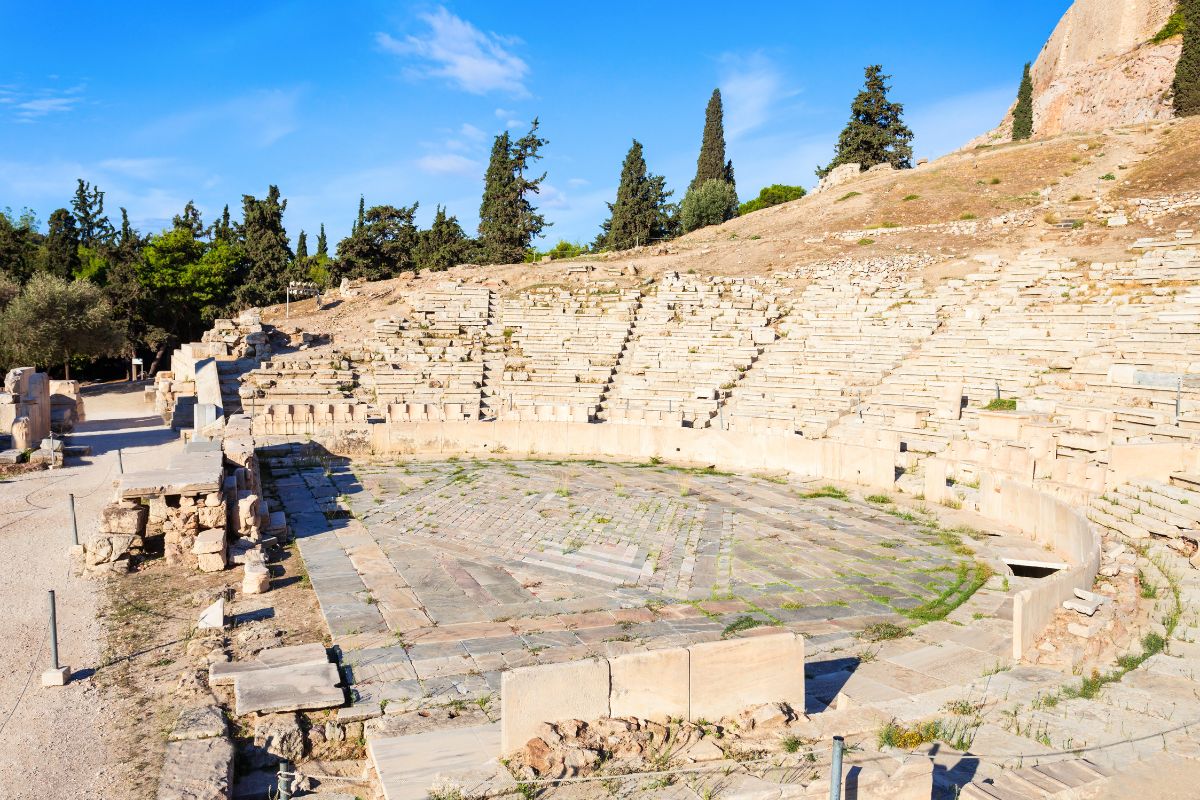
On the south slope of the Acropolis Hill, beyond the grandeur of the Parthenon, you’ll find the Theater of Dionysus, a site of paramount importance to ancient Greek culture and an unassuming cornerstone for Western civilization.
Originally a sanctuary dedicated to Dionysus, the god of wine and festivity, this theater emerged as the cradle of dramatic arts, laying the groundwork for future generations. Here, legends like Sophocles, Euripides, Aeschylus, and Aristophanes unveiled their masterpieces, forever altering the course of theater in Athens and the world.
The Theater of Dionysus invites you to step back in time to when the echoes of ancient dramas first filled the air, offering a unique connection to the origins of theatrical storytelling. Witness the birthplace of the sixth art, where the very essence of drama and comedy in the Western world was conceived and nurtured!
14 – Pnyx Hill
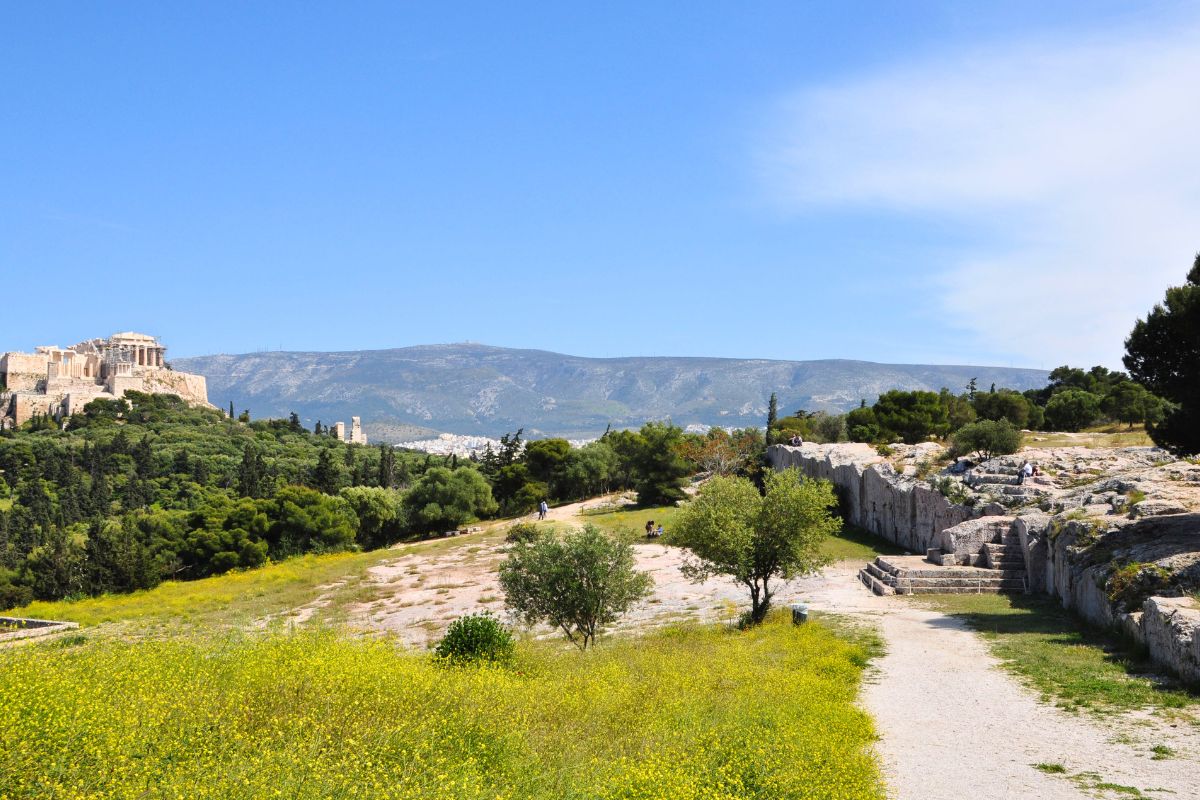
The sacred hill of Pnyx, to the west of the Acropolis, was dedicated to Zeus – the father of the Olympian Gods. This hill, though, is sacred for being the birthplace of democracy, as it hosted the city-state’s public assemblies.
Stand on Pnyx Hill, the cradle of democracy, where citizens of ancient Athens gathered to discuss and vote on matters of the state. This open-air assembly place is a testament to the democratic ideals that have shaped modern societies. Nearby, you will also find the Prison of Socrates, where the father of Western philosophy was held before committing suicide.
As you overlook the city from the same spot where leaders like Pericles once spoke, feel the weight of history and the enduring legacy of Athenian democracy. Pnyx Hill is a reminder of the power of collective decision-making and civic engagement, as well as the boundless nature of human imagination and thought.
Visiting Athens on a budget?
If you plan on visiting multiple archeological sites in Athens, consider buying the Athens Ticket Pass, which gives you access to the Acropolis, the Ancient Agora Hadrian’s Library, the Temple of Olympian Zeus and more! Additionally, this pass to the ancient ruins of Athens includes bonus audio guides in English, French, German, Italian and Spanish.
What to do after visiting the best ancient ruins in Athens?
After visiting the ancient ruins, take the next step to discover the best tourist attractions in Athens through guided Athens city tours. These tours offer a comprehensive view of the city’s heritage and iconic landmarks, with a knowledgeable guide by your side ensuring no stone is left unturned!
When the warmth of the Grecian sun calls for a refreshing break, the best beaches in Athens await to provide you with a serene escape. Crystal-clear waters and sandy shores offer the perfect setting for relaxation and sunbathing, just a short car or bus ride from the center of Athens.
For those with a thirst for adventure and a desire to explore beyond the mainland, the best Greek islands near Athens are just a ferry ride away. Each island boasts its own unique charm, offering a glimpse into the tranquil beauty and rich culture of Greece.
So, gear up for an unforgettable journey through Athens and its wonders. Happy travels!


